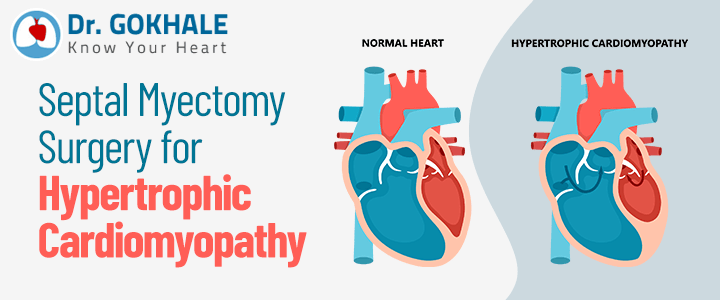Have you heard of Hypertrophic obstructive cardiomyopathy (HOCM)? This is a hereditary disease that thickens the heart muscle. However, it also has a history of suddenly springing on an individual’s heart.
This disease is caused when the left and right sides of the muscular septum in the heart thicken, stopping the blood flow from the heart to the body and causing a mitral valve leak, commonly known as regurgitation.
Some prominent signs and symptoms to show that a person is infected with this disease include chest pain, shortness of breath, palpitations, light-headedness, and fatigue. Moreover, this disease is the most common cause of unexplained sudden deaths, predominantly among youngsters.
The surgery for HOCM disease is called Septal Myectomy. This procedure is performed on patients if there is a severe restriction in blood ejection from the heart caused by the obstruction or those who still show signs of the symptoms even after undergoing medical therapy.
Once patients undergo this surgery, experience rapid and long-lasting relief from the symptoms. Found this information inadequate? Then, keep reading to unfurl all the information you need about the Septal Myectomy Surgery for Hypertrophic Cardiomyopathy!
What is Septal Myectomy Surgery in Short?
Septal Myectomy is an open-heart surgery used to treat a thickened heart muscle known as hypertrophic cardiomyopathy. During the surgery, the surgeon removes this thickened tissue to improve blood flow throughout the heart and the rest of the body so that the heart doesn’t have to work harder to pump blood. Moreover, this surgery helps overcome fatigue and shortness of breath symptoms.
How Long is the Period of Recovery After Performing the Septal Myectomy Surgery?
Initially, after the surgery, patients might feel some discomfort beyond what they experienced before. Nothing to worry about as this is a part of the trauma experienced during the surgery and is not related to anything about heart function.
Patients are kept in the intensive care unit for a day or two for monitoring purposes and later shifted and kept in the nursing ward for up to 5 days. Additionally, they might have to stay with a few tubes in the chest to drain the fluid from the areas surrounding the heart. These are removed on the first or third day after the surgery.
Nevertheless, the patient must wait up to 2 months for complete recovery. However, Gopala Krishna Gokhale, cardiologist or other assigned doctors, might give the patient guidelines for recovering and carrying out regular work.
Ideal Candidates to Take Up the Septal Myectomy Surgery
Patients who have been diagnosed with hypertrophic obstructive cardiomyopathy (HOCM) and have not responded positively to other medications or treatments are eligible to undergo this surgery. The same goes for patients with apical hypertrophic cardiomyopathy, where the mid and tip of the left ventricle thicken, and those with hypertrophic cardiomyopathy.
This surgery produces better results if performed on those with a thicker muscular septum and those who are younger. However, those with septal anatomy are suited for the surgery if they perform additional work on the heart, such as repairing the mitral valve.
Conclusion
That is all you must know regarding the Septal Myectomy Surgery for Hypertrophic Cardiomyopathy. Now, book a consultation with Dr. Gokhale to check your eligibility for the surgery and keep your heart’s blood flow smooth in the coming days!
 Ask Doctor
Ask Doctor
